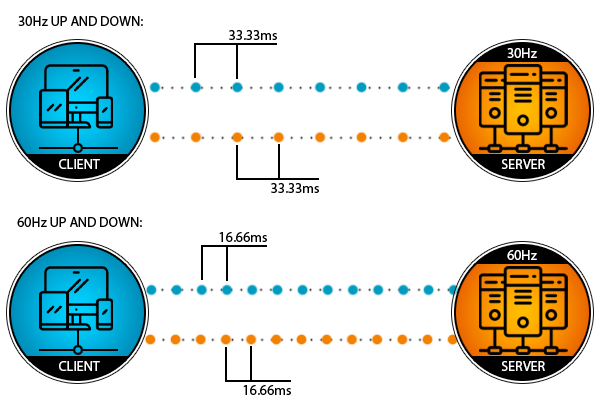Tick rate is a term primarily used in computer systems, networking, and gaming, referring to how often a system or server updates its state. A “tick” is essentially one unit of processing time. The tick rate determines how frequently the system processes actions and updates various elements like player movements, in-game mechanics, or network data transfers. In the world of gaming, higher tick rates generally result in smoother, more responsive gameplay as the system is updating and syncing actions more frequently.
What is Tick Rate in Games?
In the context of online multiplayer games, tick rate specifically refers to how often a server refreshes or updates the game state per second. For instance, in a game with a 60 Hz tick rate, the server processes game information 60 times per second. This includes actions like player movements, shooting, or other in-game events.

The tick rate directly affects how accurate and responsive the gameplay feels. Higher tick rates allow for faster response times and reduce the delay between player inputs and their in-game effects. For competitive games like Counter-Strike: Global Offensive (CS) or Valorant, a high tick rate can lead to more precise hit registration and smoother overall gameplay. Lower tick rates, on the other hand, can introduce latency or “lag,” causing a delayed or jittery experience, especially in fast-paced games.

What is Tick Speed?
Tick speed is a related but slightly different concept, often used to describe how fast in-game mechanics or systems progress based on internal “ticks.” For example, tick speed in sandbox games like Minecraft refers to how quickly various in-game events such as plant growth, fire spread, or block updates occur.
In games, adjusting the tick speed can accelerate or decelerate certain in-game processes, effectively controlling the passage of time for specific game mechanics. While tick rate affects how frequently the server updates its state for gameplay mechanics, tick speed is more about how quickly specific in-game actions happen within those updates.

What is Tick Speed in Minecraft?
In Minecraft, tick speed controls the rate at which certain natural events happen. These include processes such as plant growth, fire spreading, and the decay of leaves after a tree has been cut down. Minecraft operates on a game tick system, where one tick equals 1/20th of a second (i.e., the game processes 20 ticks per second by default).
The game’s default tick speed determines how often random events like crop growth or tree leaf decay occur. Players can modify the tick speed to make these events happen faster or slower. For instance, increasing the tick speed can make crops grow more rapidly, while lowering it can slow down processes, allowing for more extended gameplay without rapid changes.

What’s the Default Random Tick Speed in Minecraft?
In Minecraft, the default random tick speed is set to 3. This value influences random block updates, such as plant growth, leaf decay, and fire spread. If you set the tick speed higher, random events will happen more quickly, and setting it lower will slow down the random processes in the game world.
To change the random tick speed in Minecraft, players can use the /gamerule randomTickSpeed <value> command in-game. For example, setting the tick speed to 0 will stop random events like plant growth, while setting it to a higher value like 100 will speed up those events significantly.

Conclusion
Tick rate and tick speed are crucial factors in both online games and sandbox games like Minecraft. While tick rate controls how frequently a server updates the game state, tick speed in games like Minecraft determines the pace at which in-game events occur. Understanding these mechanics allows players to optimize their gameplay experience and, in some cases, gives them the ability to manipulate in-game elements for fun or efficiency.



